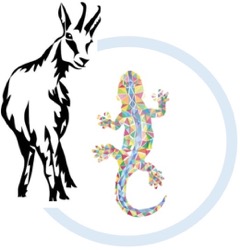On the thursday, afternoon between 17h and 18h30, 5 tours of laboratories are proposed. Please fill the registration form (a new section has been added) to make your choice. Please note that the priority will be given for the people from Barcelona.
Ultra-low temperature (Institut Néel - ULT) group (1h - 10 particpants max.)
The ULT group specializes in condensed matter experiments at the frontier of 0 Kelvin. The group possesses 2 commercial dilution cryostats (base temperature 10 mK, BlueFors), one home-made nuclear demagnetization cryostat (base temp. 500 µK, coldest machine in France) and is building a new nuclear demagnetization machine.
The group historically studies quantum fluids and solids (superfluid 3He, amorphous materials). We moved recently towards microwave optomechanics with experiments aimed at fundamental aspects of quantum mechanics: macroscopic quantum moving objects
Epitaxy of 2D materials (IRIG SPINTEC) (1h)
The « semiconductor and 2D spintronics » group deals with spin dependent phenomena in two important classes of materials: Si and Ge which are the materials of today’s microelectronics and transition metal dichalcogenides which are emerging 2D materials with exceptional optical and spin-orbit properties. We are studying model systems grown by molecular beam epitaxy and their spin properties.
Superconducting qubits (Insitut Néel) (1h - 15 particpants max.)
In our group we developed quantum experiments based on superconducting Josephson circuits and microwave photons to study superconducting qubits, quantum measurement and parametric amplifiers and to simulate many body physics problems.
SPINTEC 10-05 faciilites (1h - 20 participants max)
Positioned at the crossroad of science and technology, SPINTEC (SPINtronique et TEchnologie des Composants) is a joint research laboratory between CNRS, CEA-IRIG, UGA and G-INP.
Located on the CEA campus in Grenoble, SPINTEC gathers 100 physicists and engineers from the academic and the industrial world. The objective of the laboratory is to bridge fundamental research and innovative devices technology in the fast-growing field of spin electronics (spintronics). This tour includes an overview of the laboratory and visits to three types of research facilities: the MRAM (magnetic random access memory) probers, the SNOM (scanning near-field optical microscopy) facility, and the microwave facilities.
INS2 experimental set-up on the French "CRG-IF" beamline at ESRF (1h - 10 participants max.)
The INS2 (In-situ Nanostructures and Surfaces) expérience is located on the French Cooperative Research Group on InterFace beamline at ESRF and is dedicated to the study of the growth and structure of surfaces, ultrathin films and nanoparticles in ultra-high-vacuum by wide angle and small angle x-ray scattering. Its chamber is well suited for the MBE growth of several materials, including a wide range of metals, semiconductors like silicon and germanium, and oxides.


